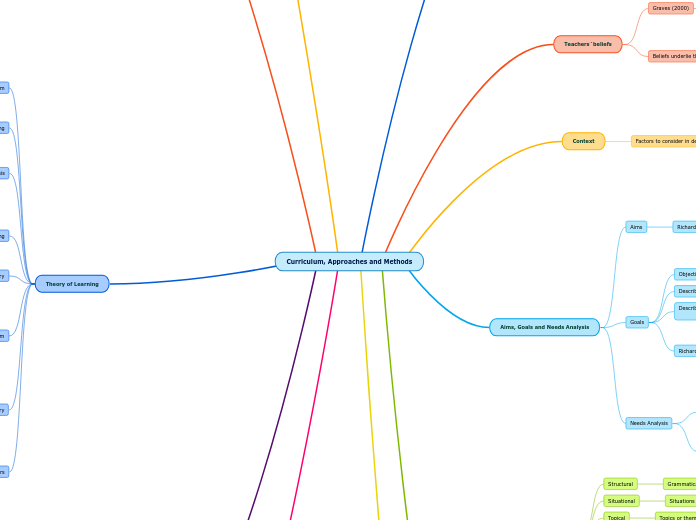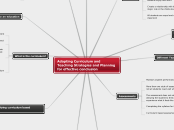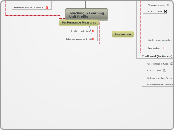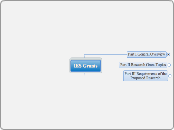Construct Learning Experiences
Activity 1
Ana Belén Domínguez Gortaire
Curriculum, Approaches and Methods
Procedure
It concern how tasks and activities are integrate into lessons and use as the basis for teaching and learning
The procedures and techniques used in giving feedback to learners concerning the form or content of their ulterances or sentences
The ways in which particular teaching activities are used for practicing language
The use of teaching activities to present new language and to clarify and demonstrate formal, communicative, or other aspects of the target language
Drills, dialogues, information gap activities, etc
Design
analysis
The role of instructional materials
Reflect decisions concerning:
The abilities of teacher
Relation of materials to other sources of input
Form of materials
Primary goal of materials
Teacher roles
According to
The interactional patterns that develop between teachers and learners
The degree to which the teacher is responsible for determining the content of what is taught
The control of the teacher has over how learning takes place
The types of functions teachers are expected to fulfill, whether that of practice director, counselor, or model
Learner roles
The view of the learner as processor, performer, initiator, problem-solver, or other
Degree to which learners influence the learning of others
Patterns of learner groupings adopted
Degree of control learners have over the content of learning
Activities learners carry out
Types of learning and teaching activities
Activities are design to activate specific second language acquisition processes and grammar.
Teaching activities focus on grammatical accuracy and on communicative skills
Is the form in which linguistic material is specified in a course or method
Objectives
The degree to which a method has process - oriented or product - oriented objectives may be revealed in how much emphasis is placed on vocabulary acquisition and grammatical proficiency and in how grammatical or pronunciation errors are treated in the method
Theory of Learning
Individual factors
Learning strategies
Motivation
Affective factors
Learning styles preferences
Sociocultural learning theory
Learning takes place in a particular social setting, in which there is interaction between people, objects and events
Language learning is resulting from dialogue between a learner and a more knowledgeable other person
Constructivism
The organizer reorganizes new knowledge on the basis of existing knowledge, and social dimensions, as the learner interacts with others and solves problems through dialogue
Learners are actively involved in their own process of learning
Knowledge does not exist independently of the meaning constructed from experience by the learner
Learning is seen as something that results from the learner´s internal construction of meaning (Williams and Burden, 1997)
Interactional theory
Learning is an interactive process and depends on learners working together to achieve mutual understanding
Skill learning
Learning involves development from controlled (consciously managed of skills) to automatic (skills not require conscious attention) processing
Skills are integrated set of behaviours that are learned through practice
Creative - construction hypothesis
It is implicit in Task - Based Language Teaching
Errors are seen as evidence of learning rather than signs of faulty learning
Learning is a creative process that has common features regardless of the learner´s language background
Cognitive - code learning
Language learning was a cognitive process depending on both deductive and inductive learning as well as meaningful practice
Behaviorism
Language was taught through extensive drilling and repetition exercise and through making use of activities that minimized the chances of producing mistakes
Learning is a process in which specific behaviors are acquired in response to specifici stimuli
Theory of language
Lexical model
It suggest that grammatical competences arises out of phrase - and lexically - based learning and argue for a greater role for vocabulary
Prioritizes the role of lexis and lexical, chunks or phrases in language and highlights the interrelatedness of grammar and vocabulary
Genre model
Feez (1998)
The social context is shaped by the people using language
Texts are shaped by the social context wich they are used
Language users create texts to create meaning
Language users draw on this resource each time they use language
The resource iof language consists of a set of interrelated systems
Language is a resource for making meaning
Sociocultural model
It reflects culture, customs and beliefs
Konwledge is constructed through social interaction with others
Language is a communicative activity in which the social context is central
Interactional model
It focus on the patterns of moves, acts, negotiation, and interaction found in conversational and other kinds of exchanges and which are central to an understanding of discourse
Areas of inquiry: second language acquisition, interaction analysis, conversation analysis and ethnomethodology
Language is seen as a tool for the creation and maintenance of social relations
Functional model
Lead to a specification and organization of language teaching content by categories of meaning and function
Functional approaches emphasize the semantic and communicative dimension
Seeks to know how language is used to achieve different types of communicative purposes
Language is a vehicle for the expression of functional meanings and for performing real-world activities
Structural model
Its target is seen to be the mastery of elements of this system
Lexical items: function words and structure words
Grammatical operations: adding, shifting, joining, or transforming elements
Grammatical units: clauses, phrases, sentences
Phonological units: phonemes
Language is a system of structurally related elements for the coding of meaning
Cognitive model
Chomsky (1980)
Grammar - Translation Method
Knowledge of the principles of language is acquired through the abstraction of the rules when studying grammar and carrying out translation activities
Our minds contain a mental grammar that consists of universal principles that are common to all languages, and parameters that vary according to different languages
Atkinson (2011)
Learning as a abstract knowledge acquisition
Abstracting the rules of the competence that underlies linguistic performance
Representationalism
The mind stores internal representations of external levels
Mind as a computer
Operations are processed
Edward Anthony (1963)
Technique
Classroom procedures are described
Is implementational
It is a particular trick, stratagem, or contrivance used to accomplish an immediate objective
Method
Here theory is put into practice and we choose about the particular skills and content to be taught
It is procedural
The method is a general plan to present the material based on the approach we have
Approach
It refers to the philosophy or belief system, that a method reflects
Assumptions and beliefs about language and language learning are specified
Describes the nature of the subject matter to be taught
Evaluation
Scrivener (1997, quoted by Beretta, 1992)
Purposes of evaluation
To identify areas for improvement in an ongoing programme
To justify future courses of action
To identify what effect a programme has had
To decide whether a programme has had the intended effect
Types
Summative evaluation
Effects of a programme that has come to an end
Formative evaluation
Improving ongoing programmes
Syllabus
Materials
Make decisions based on what you want your students to learn according to your goals and objectives and your syllabus focus
Language Testing
Types of tests
Criterion-referenced
Texts intended to measure the amount of course material that each student has learned
Norm-referenced
Compare the relative performance of students to each other
Brown (1995)
Tests can be used to drive a programme by shaping the expectations of the students and their teachers
Organizing the course
Sequencing the units
Organizing unit content
Determining unit content
Identifying the course units based on nthe organizing principle
Determining the organizing principle
Shape of Syllabus
Dubin and Olshtain (1997)
The Story Line Format
It could be used in conjunction with any of them
Narrative
The Matrix Format
Maximum flexibility to select topics from a table of contents in a random order
The Cyclical Format
Teachers and learners work with the same topic more than once
The Modular Format
Academicallt oriented units are integrated
The Linear Format
Teachers cannot change the order of units or skip some
The basic dilemma which course planners must reconcile is that language is infinite, but a syllabus must be finite
Types of Syllabuses
Task
Activity based categories
Skills
Such as listening for main ideas, scanning a reading passage for specific information
Notional
Conceptual categories called notions
Functional
Functions
Topical
Topics or themes
Situational
Situations form
Structural
Grammatical and phonological structures
Aims, Goals and Needs Analysis
Needs Analysis
Data obtained = posibility to formulate general aims and more specific objectives as intended outcomes
Hutchinson and Waters (1996), Jordan (1997), Robinson (1990)
Language
Present situation
Target needs
Goals
Feasible
Precise
Consistent with the curriculum aim
Describe learning outcomes in terms of what a learner will be able to do
Describe learning in terms of observable behaviour or performance
Objectives are more specific than aims
Aims
Richards (2001)
Describe important and realizable changes in learning
Provide focus for learning
Provide guidelines for teachers and learners
Provide a reason for the program
Context
Factors to consider in defining context
Time
Teaching resources
Nature of course and institutions
Physical setting
People
Teachers´beliefs
Beliefs underlie the decisions you make
Your view of teaching
Your view of learning and learners
Your view of the social context of language
Your view of language
Graves (2000)
Your view of what language is or what being proficient in a language means affects what you teach and how you teach it
Curriculum
Approaches
Communicativa approach
Audio lingual
Direct approach
Grammar translation approach
Classical approach
Syllabuses
Dubin & Olshtain (1997)
Is a more detailed and operational statement of teaching and learning elements
Lee (1980)
It contains points about the method of teaching and the time to be taken
Is a statement of what should be taught, year by year.
Course
Hutchinson and Waters (1996)
Is an integrated series of teaching-learning experiences, whose ultimate aim is to lead the learners to a particular state of knowledge
White (1993)
Components: purposes, content, methodology and evaluation
Allen quoted in Nunan (2000)
Involves philosophical, social and administrative factors
Richards, Platt and Platt (1993)
Can be defined, as an educational program wich states
Some means for assessing whether or not the educational ends have been achieved
The content teaching procedures and learning experience which will be necessary to achieve this purpose
The educational purpose of the program









